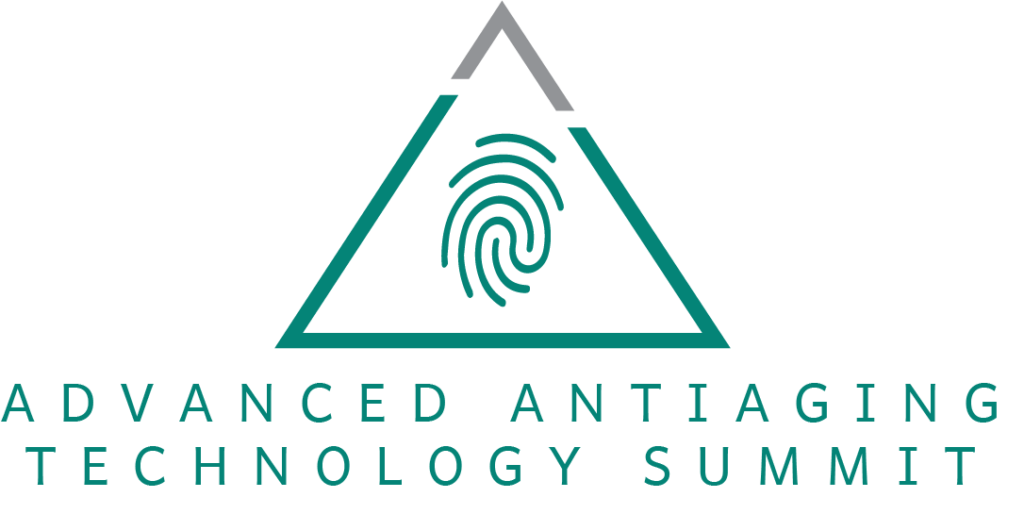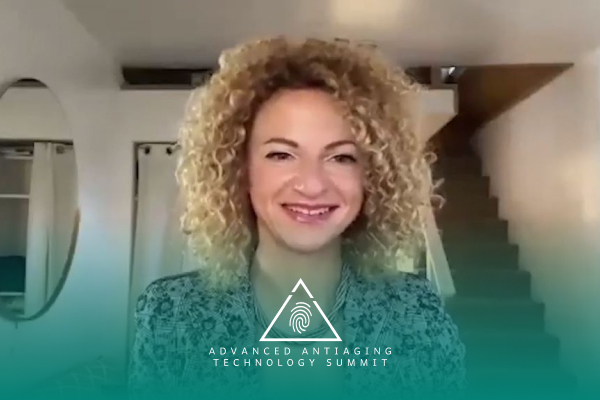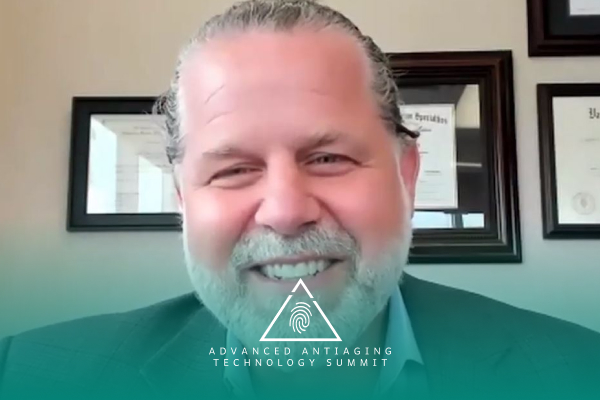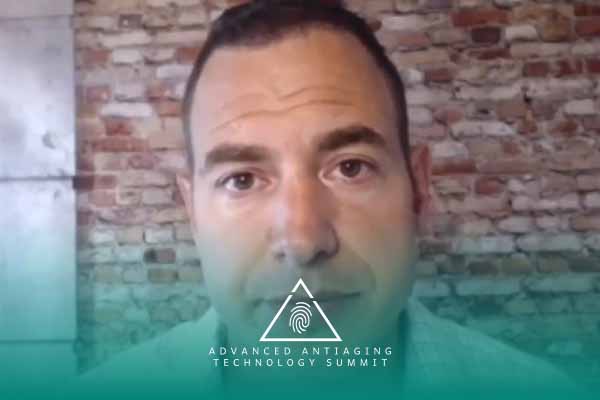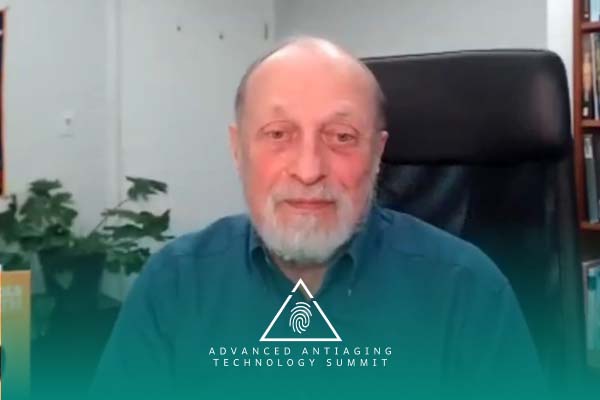Join the discussion below

Dr. Goel is a medical physician and founder of Peak Human Labs. His mission is to speak knowledge of the latest cutting edge medical tools and science in order more people to live in a Peak mental, physical and spiritual state. You can learn more about his work at longevity.peakhuman.ca. Read More

Dr. Lucia Aronica, Ph.D., is Lecturer at the Stanford Prevention and Research Center, Genomics Lead at Metagenics Inc., and editor of the peer-reviewed journal Life by MDPI. Her research investigates how diet, genetics, and epigenetics interact with each other to impact our health and longevity, and how to use this... Read More
Epigenetic Changes: Epigenetic marks, like DNA methylation and small RNAs, influence gene regulation, targeting histone modifications and gene silencing mechanisms.
Precision Medicine and Genetics: Genetic factors contribute to diet and lifestyle responses, but a comprehensive approach integrates genetics with metabolic and epigenetic markers for personalized interventions.
Reversibility and Future Possibilities: Epigenetic changes are reversible, as seen in lifestyle interventions, suggesting a future focus on increasing healthspan and possibly lifespan through tailored strategies.
Sanjeev Goel, MD, FCFP (PC), CAFCI
Hi everyone, I’m Dr. Sanjeev Goel, and you’re listening to the peak Human Advanced Anti-aging and Technology Summit. Today I’m interviewing Dr. Lucia Aronica. Dr. Lucia Aronica is a lecturer at the Stanford Prevention and Research Center, Genomics lead at Metagenics Incorporated, and editor of the Peer Reviewed Journal by MDPI. Her research investigates how diet, genetics, and epigenetics interact with each other to impact our health and longevity, and how to use this information to design personalized lifestyle interventions. She’s an acclaimed speaker and serves as an advisor for companies active in the personal genomics and precision health field. Dr. Aronica received her PhD from the University of Vienna, and has research experience from the University of Oxford, University of Southern California, and University of Federico II of Naples. She has published research papers in top ranked peer reviewed journals, such as Cell, Genes and Development, and the EMBO Journal. I hope you enjoy today’s talk with her. Hi everyone, I’m Dr. Sanjeev Goel and you’re listening to the Advanced Anti-aging and Technology Summit. And today my guest is Dr. Lucia Aronica. How are you Lucia?
Lucia Aronica, Ph.D
I’m great Sanjeev. Thank you very much for having me.
Sanjeev Goel, MD, FCFP (PC), CAFCI
I’m so excited to have you. I just heard your talk to the Academy of Anti-aging Physicians, and I thought it’s very important for our viewers to listen to your expertise on this topic. So at first, if you could tell us how did you get into the field of Epigenetics? Why did you feel this is something you want to devote your life to?
Lucia Aronica, Ph.D
Yes, so my interest for Epigenetics is a love story between the food and science. I was born in Italy where we value food as medicine and I decided to study Epigenetics, which was at that time in the early 2000 an emerging science. And Epigenetics, then the study of Epigenetics really showed me how actually, lifestyle can become biology. And so I think Epigenetics is the ultimate science for the bio hackers out there, because it provides a molecular explanation as to why actually our life exposures and actions can turn into biology, thus impacting our health span and lifespan. And I’ve been so, dedicating the past 15 years of my career to this field, I first did my PhD studies in Epigenetics at the University of Vienna.
At that time, I was studying one Epigenetic modification called the Small RNA’s. And then I did a Post Doc. at Oxford university on another Epigenetic modification called Histone modifications. And finally, I came to Stanford to study yet another Epigenetic modification, DNA methylation and its role in basically lifestyle medicine. Specifically I’m looking at how DNA methylation changes after a lifestyle intervention involving a low carb and a low fat diet within, the DIETFITS clinical trial. This is the largest ever undertaken randomized clinical trial, looking at weight loss and other disease risk biomarkers during the course of a one year intervention with either a low carb or a low fat diet.
Sanjeev Goel, MD, FCFP (PC), CAFCI
Oh, wow, that’s great. So let’s definitely get into that, but before we do. If you can just tell our viewers what is like, if you could explain Epigenetics a little bit more in broad terms, so they can get their heads around it. That’d be very helpful.
Lucia Aronica, Ph.D
Yes, yes. So Epigenetics Epi means on the top. So on the top of our genes that are molecular marks called Epi genetic marks. And these marks act like a switch for genes. They can turn genes on and off. And this can explain remarkable differences in the way our cells look and perform, even without causing any genetic changes. And that’s why I told you before Epigenetics is the ultimate science for bio hackers. You can explain why, even if you don’t change your genetics, you, a true lifestyle, you can change your biology. Because these switches, unlike genes these switches dynamically respond to lifestyle.
And that’s why you can think of your DNA as hardware, and your epi-genome the entire set of you epigenetic marks, as software that you can reprogram through your lifestyle choices and life exposures. I mean, the power of epigenetics is so powerful, that for example epigenetics can explain why we have the same DNA in each cell of your body. And yet every single cell look different from each other. So you have brain cells, and skin cells that have the same genetic information, the same hardware, but because they each use a different epigenetic software to tell the cell which genes to turn on and off, they look so different from each other. So that’s so profound.
Sanjeev Goel, MD, FCFP (PC), CAFCI
That’s telling us that they’re most everything we’re seeing is not the DNA level, it’s at the epigenetic level.
Lucia Aronica, Ph.D
Yeah.
Sanjeev Goel, MD, FCFP (PC), CAFCI
Most of their type is related to the epigenetic level.
Lucia Aronica, Ph.D
Yes, and of course epigenetics is not the only lifestyle omics to explain why. So genomics is set in stone. We can’t change our genes. But then there are other omics called the collectively lifestyle omics, which can explain why the lifestyle can actually change our biology. And these are Epigenomics, Microbiomics, Proteomics and Metabolomics. And these omics together, explain why, you know, lifestyle can become biology and affect our health.
Sanjeev Goel, MD, FCFP (PC), CAFCI
So let’s just, you were mentioning these epigenetic modifications. And one of your study right now is looking at methylation but you did mention two other types of modifications. So if you could just kind of just run through them and in categories, and why, how did these modifications impact how the output is? Which I guess is the proteins and all that that’d be very helpful.
Lucia Aronica, Ph.D
Yes, sure. I will start with DNA methylation because it’s the focus on my studies now, and it is the best studied modification especially for lifestyle interventions, and for a reason. Because we have the technology to measure DNA methylation at high resolution and a very, in a very accurate way. So we can really tell you how much a gene is methylated and which on which nucleotide precisely, before and after a lifestyle intervention. And DNA methylation is the addition of a methyl group to the DNA itself. And specifically on the Cytosines so the your DNA’s made of four Nucleotides and Cytosines those in is one of these Nucleotides. And the Cytosines entirely in the context of C G Di-nucleotides.
So there are these Cytosine and Guanine Di-nucleotides in you DNA. And when the cytosine is methylated this called DNA methylation. So basically your DNA methylation is the methylation addition of a methyl group to your DNA itself. Then we have Histone Modifications. Histone Modification can be Histone Methylation, Phosphorylation, Ubiquitylation, phosphorylation, there are so many different marks that are put on the Histones. What are Histones? Histones are proteins that help coil the DNA inside your cells, so that the DNA becomes compact that it can fit the cell nucleus, but at the same time it’s accessible, it’s compacted in an organized way, so that the cell knows which genes are located where. So the cell machinery can access those genes and turn them on or off. And actually Histones are so important because the reason why a gene is off, is because it’s so coiled with Histones it’s so tightly coiled with Histones, that a gene cannot be open and read by the cell machinery. So Histones can control the opening of, and closing, of the chromatin to make, to turn genes on and off.
Sanjeev Goel, MD, FCFP (PC), CAFCI
It sounds like that really that is the main mechanism of manipulating how Histones impact of making the genes go off and on.
Lucia Aronica, Ph.D
Yeah.
Sanjeev Goel, MD, FCFP (PC), CAFCI
Which sounds like methylation’s one of those ways that things are being changed. Is that correct?
Lucia Aronica, Ph.D
Yeah, so exactly. So the opening and closing of the chromatin is the gateway to gene expression, is the mechanism of Epigenetics. You can regulate that either by directly methylating the DNA, because then when you methylate the CG’s the fact is that you recruit some reader protein that read the DNA methylation modification and open the chromatin there. So it’s a signal for the cell to tell come here and read me, or come here and shut me down and close the chromatin. Or you can modify the Histones and by putting these marks on the Histone in Histone Methylation, you achieve two outcomes.
The first outcome is that you can effect directly the opening and closing of the chromatin by effecting the Electrostatic Binding between the Histones and DNA, because Histones are positively charged and the the DNA’s negatively charged. So when you modify Histones, you directly affect these binding and opening. And then on the top of that, like with the DNA methylation, the Histone modifications, work as a docking site for reader protein that comes and open or close the chromatin. And then the, the third mechanism are small RNAs. And these a very complicated topics. I will briefly just say that, small RNAs are an exciting way of regulating the Epigenome.
Sanjeev Goel, MD, FCFP (PC), CAFCI
Micro RNAs, what is?
Lucia Aronica, Ph.D
Yes, so I’m using small RNAs because it’s a broader term. Small RNas does include Micro RNAs which are the human version. Then there are, I was working on other small RNAs that are called the, the in another way, but anyway, small RNAs and micro RNAs are example of small RNAs. And why they’re so exciting because these are basically mobile Epigenetic marks. You can think of them like that, because the small RNAs are actually, they can shuttle between the cytoplasm and the nucleus. And so they are mobile. It’s like the DNA methylation resistance, they’re are just around the DNA. And what they do, they help target either Histone modification, especially Histone modification to specific Laucide.
Because if you think about it how can a cell know where you are going to modify Histones and how? Small RNA do that. So they can signal like the DNA methylate, the writer enzymes, the enzymes, that write epigenetic modifications on your genes. They can act as a signal and say come here and methylate this gene or un-methylate this other gene. Yeah, so this is the little bit of function small RNAs. The second function is a call to another mechanism. So this is called Transcriptional Gene Silencing which means they affect, whether a gene is transcribed or not, on or off. Or the small RNAs can also do something else, which is called the Post-Transcriptional Gene Silencing.
And it’s also known as RNA interference. And these is another Epigentic mechanism by which actually the small RNA directly target destruction of the mRNA, the messenger RNA, after it’s production. So after transcription, you produce an mRNA and then this is destroyed the Post-Transcriptionally by small RNA. And this is called, Post-Transcriptional Gene Silencing. It’s perhaps to much detail but, I think it is an exciting field.
Sanjeev Goel, MD, FCFP (PC), CAFCI
That’s a very good feel to hear that because it’s always more complex, the more you dig,
Lucia Aronica, Ph.D
Oh yeah.
Sanjeev Goel, MD, FCFP (PC), CAFCI
The more complexity there is. So let’s now, now that you’ve, kind of said, okay that these DNA methylation is a marker of, you know as a way for the for the modifications to happen Epigenetically and then determines the expression of what turns out to be our Phenotype, the way we look in our characteristics and this, lifestyles, you mentioned diet. But before we get to, how we modify it. So generally the methylation has happened as we get older, right? Will we talk a bit, about these epigenetic clocks that just living is causing a methylation, like just living. And there’s a certain amount of that is happening no matter what we want to do. Is that, is that correct?
Lucia Aronica, Ph.D
Yes, so let me go back. So methylation is a physiological process. It’s happening always. and actually it’s a good thing that is happening, without methylation, we couldn’t live. So sometimes I get this question. Is there a good methylation and a bad methylation? Actually, I wouldn’t say that. I would say the methylation is always good but when it goes wrong, it becomes bad. So as you pointed out, with aging, what happens is that we have aberrant methyation not only methylation in general we have aberrant Epigenetic changes.
Because one important thing to just highlight here, we have seen that methylation is only one little component of Epigenetics. We have, Ubiquitylation, Phosphorylation so many modifications, small RNAs, but you know all these Epigenetic modifications including methylation get a little bit, you know start to not working properly with age. And that’s why Epigenetic alterations are one of the main hallmarks of aging.
And now it turns out that because we can now measure Epigenetics and DNA methylation so precisely, in the last year, many so-called Epigenetic clocks have been developed that are based on DNA methylation and can measure, your DNA methylation to estimate your age, and this called the biological age. So the age of your tissue and cells. And fascinatingly this biologically can deviate from your chronological age. So you can be actually biologically younger or older than your chronological age and we now see that this reflects also your lifestyle and life exposures.
Sanjeev Goel, MD, FCFP (PC), CAFCI
So that’s very interesting. Can talk about some of these clocks, the first generation, second generation.
Lucia Aronica, Ph.D
Oh yes, yes, there are so, yeah, the, the, so far the have been 13 published clocks DNA methylation clocks and I’m sure there are many more under development now. So by now, this information that may be outdated. And the, I think one, first of all, the Epigenetic Clocks capture two different type of information, we have seen chronological age and biological age. And you have mentioned the first-generation and secondary-generation clocks, mostly the first generation clocks were trained to predict chronological age. And so I think the gold standard for estimating a chronological age is so far the Horvath Clock 2013, which as a correlation with the chronological age of, I think 0.97 or something.
So it’s very, very precise estimating, chronological age. But then if you think about it, how useful is it to estimate chronological age? We already have passports for that, right? So it can be very useful for forensic applications. For sure, you can read precisely track the age of a forensic sample, for example. But for us, bio-hackers probably, we are more interested in estimating biological age and how we can actually become biological younger when we improve our lifestyle. And for this purpose the second generation clocks are probably, you know, are better options.
At least they are aiming at estimating biological age better focusing on biological age and specifically really defining what biological age is like biological age is actually a composite measure of different changes. You can have for example, you know, the health, it’s the measure of health. But you can have changes that, explain, for example whether yourself has become senescent. Should we redo this part?
Sanjeev Goel, MD, FCFP (PC), CAFCI
No, no it’s perfect, I am just, just.
Lucia Aronica, Ph.D
Okay, okay.
Sanjeev Goel, MD, FCFP (PC), CAFCI
It’s excellent.
Lucia Aronica, Ph.D
Yeah no, I was wondering about this noises, but.
Sanjeev Goel, MD, FCFP (PC), CAFCI
No go ahead it’s okay.
Lucia Aronica, Ph.D
Okay, okay, so, so so the secondary generation clocks, instead are focusing on capturing biological age. Specifically, a recent paper by Morgan Levine described how we can actually deconstruct the values of the Epigenetic clock to understand that, which Epigenetic signals are captured by single clocks And which of the signal explain differences in biological age and which type of biological age. For example, we have some second generation clocks that are better at predicting cancer. You know, the correlation with the cancer progression or the cells, or some other clocks are better estimating self senescence, other are better at estimating mitochondrial dysfunction.
All these features are important processes in biological age. So even biological age is not one single entity. For these reasons that there’s not a one size fits all Epigenetic clock, there’s not such a thing. Actually, Epigenetic clocks are a composite measure of biological age, and they also of course correlate strongly with the chronological age. And I think the future, the way forward is really to develop, like clock that are focused on a subset of epigenetic signals that reflect specific biological processes connected with age. May that be cancer, senescence, mitochondrial dysfunction. Because I think these are the tools that we will need for precision medicine. We know that, you know, you may have, you, you may have actually a very strong mitochondrial function but you may be starting developing some cancer cells. And these are two different things.
Sanjeev Goel, MD, FCFP (PC), CAFCI
They’re completely separate, that’s what I was curious about is that we have, you know somebody could have, you know, do very well on one particular score. I’ve seen like athletes come back with five years older on the Horvath.
Lucia Aronica, Ph.D
Athlete, oh my gosh, this is a, this a common thing
Sanjeev Goel, MD, FCFP (PC), CAFCI
On a, 15 years younger on a Hannum score. So I’m just the kerfuffled, I’m like, I don’t understand how that could be. How, how did this happen, so. Doesn’t it normally happen that you’re, if you’re if you’re, you know, aren’t things all coordinated, like you know, if you’re doing poorly in one area that you can do the other one?
Lucia Aronica, Ph.D
This is exactly what I was talking about, and why I think it’s so important that we do studies where we compare different clocks, with lifestyle intervention, in different populations, like even athletes. So I don’t have an answer for your specific question like athletes, why they are older on one clock. But my assumption is that there are some Epigenetic changes, right? That for example reflect athletes trigger a lot of hormesis, right? They make damage, they trigger, they produce damage while exercising. And this damage actually is used by yourself to trigger a positive adaptation that eventually make make you live longer.
But probably if you are measuring like just the steady state of your Epigenome, probably after exercise, you, the readout maybe an increased, oxidative damage and increased damage signal that perhaps is captured by the clock as an aging signal because your original clocks, that were trained against chronological age, are trained against recognizing oxidative damage as an aging signal. And so that’s why I, you know, I think we are just scratching the surface of biological clocks in Epigenetics. Because we do need, like, different to develop, different more precise clocks for precise outcomes and populations. Otherwise it’s not going to be clinically useful.
Sanjeev Goel, MD, FCFP (PC), CAFCI
Yes, that makes some good sense to me. Let’s go, let’s go right onto the lifestyle changes and what we understand about these things so far from the science. So I know that you’re studying low-fat versus low-carb because I get this all the time. And I know that some studies you’re looking at, is like, what genetic predispositions do we have that make us more suitable for one or the other? Because that’s the only thing that could potentially add more value to my, to my patients, or to the viewers, to understand which way should they go? So do we know that at all? Like, do we have any further insight?
Lucia Aronica, Ph.D
Unfortunately not, so, So first of all, let me say that yes, genes can modulate the way we respond to nutrients. And this is called Nutri-genetics, however, the genetic effects on your response to food, is polygenic. So there are many genes that do this job. And so testing one, 10 or 100 genes probably, is not going to give you any accurate prediction. For example, we did test in our study three genes that were, had been shown previously to predict whether somebody was more likely to respond to a low fat, low-carbohydrate diet but we could not validate those previous reports in our cohort. And the reason is that probably, we just tested three genes.
That’s not enough. And also I think, our study just demonstrate that genetic is only one component to assess, clinically, when estimating your nutrition predispositions. You need to assess other functional markers, your diet, your habits, to come then to a more accurate prediction. And this is called precision medicine. So for example, for your carbohydrate tolerance, we know that yes, there are a bunch of genes that can indicate that but then there are other metabolic markers that can be actually an indication of your carbohydrate threshold.
This is called Palmitoleic Acid is actually one of these markers, it is produced when we actually eat carbohydrates as a first marker of the normal epigenesis from carbohydrates, and it turns out that, for example, if your Palmitoleic Acid spikes up, after you eat carbohydrates, yeah, you may have a lower carbohydrate threshold. And then, you know, the powerful of combining your genetics, your genetic predispositions are just the starting line, your heath journey.
You start with those predispositions but then you modify that with your lifestyle. And so other markers including metabolic markers and Epigenic markers and I’m working on some of them, that can can explain how your life history, eating history, and life exposures, exercise have changed your epigenetic and have interacted with your genetic background to actually make who you are now. And so that’s what I call precision medicine. It’s the integration of Nutri-genetics, Nutri-genomics, and other lifestyle omics, to really individually and granully, categorize every single patient and a target lifestyle intervention to their needs.
Sanjeev Goel, MD, FCFP (PC), CAFCI
So is there a way, so you’re saying, so we can’t just look at the genes because there’s, you know probably 10, 15, 20, whatever, how many genes there are and they’re all having very central play. So do you think we’ll ever going to be able to understand that or will we have to go to a higher level at the epigenetic level of genomics or? What do you think?
Lucia Aronica, Ph.D
I think so, I think I’m actually a believer. We should just start already implementing some Nutri-genetic in clinically. And that’s part of my current work, but genetics will never be a standalone predictor. So we can start small by including, so what what I’m doing now, I’m trying to really review all the clinical literature on which genetic variants have been associated with which outcomes in the context of studies that have tested the response to specific diets or lifestyle interventions. In the clinic, in people, because this is also important. The information that you see out there on the internet about genetic association has no systematic review behind it.
So when I read that information, I don’t know whether it comes from an animal study, a human study, in human studies, it’s an observational study, just in a bunch of people with no intervention, or it’s a clinical trial. We need, first of all, that to really rank and give an evidence score for each genetic association in order to implement that in the clinic. So this is the first step, I do believe, so to answer your question, I do believe we can do that. And I’m already working on this because, I think it’s an important tool for clinicians and patients to see what their predispositions are. And just as a tool to pinpoint potential intervention needs, potential, and then once you pinpoint that then integrate with functional markers, to see whether actually those associations are present or not.
Then, then that’s the power. So I think we can, we can start. So the first step is seeing what we are, starting where we are now. We already have many studies on the genetic interactions, even in the clinic. So let’s just focus on them and use that information to validate even further those associations. And pick other associations. And then the next step will be, as you mentioned the include more genes in so-called Polygenic scores. We already are there, in 2018, some studies were, big studies were published, showing that a polygenic score including, I think 6 million snips in the genome, was able to predict cardiovascular disease with an accuracy comparable to monogenic mutations.
And this is huge. This is just like increasing. So clinically, if we implement a tool like that, we’ll be able to increase the prediction of patients at risk 20 times. And that is just like huge. So the second step is going to polygenic score in more genes. And then the third step is really integrating genetics with multi omics epigenetics and other omics. So I’m excited, I think we are already on the right path and we can certainly do that in, you know, we will make huge steps forward in the next five, 10 years, I’m sure.
Sanjeev Goel, MD, FCFP (PC), CAFCI
It sounds like that, I mean, polygenic score requires like, you know, huge, massive supercomputer. This is not simple. This is not something that can be just worked by.
Lucia Aronica, Ph.D
No it’s.
Sanjeev Goel, MD, FCFP (PC), CAFCI
By one brain or whatever. This is something that requires massive data to look at the various interactions. And I know what right now you have these and these charts which show, okay, they assign a value of one per gene, like that, they might look at seven genes look at diabetes. So figure, positive, you have five, five out of seven but that’s assuming that each one has an equal contribution. But it’s probably not like that.
Lucia Aronica, Ph.D
No, in the score, actually, the, the variants are weighted based on their assumed weight of significance in that in association studies. But I just want to say, okay, you are right. This is huge. This is perhaps, you know, it does require a ton of data. But we do have access now to huge, datasets and bio-banks. So what I envisioned for the future is that we may just come with some candidate polygenic score like the one for cardiovascular disease based on these association studies. And then have clinicians like you that then test this polygenic scores in the clinic, in real working class setting. With, granular information about other biomarkers, functional biomarkers, and these will advance the field.
Sanjeev Goel, MD, FCFP (PC), CAFCI
Wow, okay. So just how much of this is reversible? Like, let’s say our, somebody has, you know, they’re watching this, saying, you know I haven’t taken care that much the last 20 years, and I’m interested, but now is it too late for me? How much of this epigenetic change is reversible?
Lucia Aronica, Ph.D
Yeah, so I actually now can give you an accurate estimate on how quickly you can reverse those epigenetic marks with lifestyle. Because just recently a study was published I think a couple of weeks ago by Kara Fitzgerald and Moshe Szyf. And they showed that with a lifestyle intervention involving basically a nutrient dense diet, and intermittent fasting, and the stress reduction, you can basically become two years epigenetically younger in just eight weeks.
Sanjeev Goel, MD, FCFP (PC), CAFCI
And that’s an incredible thing when I saw that but they used, I mean, they use this Horvath clock, no, they used the
Lucia Aronica, Ph.D
Yeah, they did use, and I’m amazed. I don’t know how, I mean, I think, you know, I’m excited, I think this is a pilot study was in I think 40 people, it’s a small study. I’m just excited by the potential. I can tell you that there were, that there have been already many studies showing the reversibility of epigenic changes. There are studies done in obese people that after Bariatric surgery can reverse their epigenetic marks to the lean type. There are studies done in smokers that showing that, smoking associated epigenic marks can be reverted, although it takes apparently 6 years.
Sanjeev Goel, MD, FCFP (PC), CAFCI
15 years in medical school that this would take 15 years to revert back.
Lucia Aronica, Ph.D
Yeah, yeah exactly.
Sanjeev Goel, MD, FCFP (PC), CAFCI
Maybe that epigenetics make a difference.
Lucia Aronica, Ph.D
We do have, you know, we do have many hints that these changes can be reverted. And even in our study we see a ton of changes in the epigenetic marks. And also we look at some epigenetic marks of diabetes and they reversed after lifestyle intervention. So, you know, this is not the first study showing that. I was excited to see that this was a short study with lifestyle intervention and looking at biological age. But there are many, many hints that we can reverse things in the positive direction.
Sanjeev Goel, MD, FCFP (PC), CAFCI
So isn’t there a limit. Like we, I mean, physically we still are aging. And so I just wanted to get your thoughts on that. Like, what do you think, do we think we’ll be able to have an answer to actually you know, like actually, almost stop our aging? Do you think that it’s possible and look at DNA Epigenetic change it, can we stop it with epigenetic modifications?
Lucia Aronica, Ph.D
This is interesting. We can already do that in vitro. We can, through epigenetic reprogramming, we can take a cell and then give the cell a cocktail of, of reprogramming factors. And then reprogram that cell, actually turned back the clock Epigenetically, reprogram that cell to an induced pluripotent stem cell, we can do that. And we can even only just transiently, reprogram that cell in vitro so that it doesn’t become a stem cell, but it just rejuvenate. We can rejuvenate in vitro a cell. With a cocktail of reprogramming factors. We can already do that. This is called Direct Reprogramming or Transit Reprogramming. And, and we can even do a so-called Trans Differentiation.
Which means we are not actually touching the the biological age, but we are just turning the cell into another, skin cells into brain cells, without changing biological age. This is just to say, we can precisely manipulate cell identity and biological age independently in vitro. And that is huge. So we can, possibly, I mean, scientifically it is possible. Now with lifestyle. I think the concept of longevity medicine is of incremental and synergistic strategy to enounce first healthspan, to focus on healthspan, and automatically of lifespan. So what I think it’s, we should really more think in terms of horizons for longevity medicine. So, horizon one is probably just increase healthspan, and in the process, perhaps extending also lifespan by implementing, by focusing on lifestyle and you know just leveraging what we already have.
And it’s probably already having the field and we already see that people are living longer and healthier. And then I think horizon two and three will require incremental involvement with multiple interventions, and more high risk interventions, first tested for some diseases because of course in medicine the first principle is do not harm. So we want to test those high-risk interventions with people that perhaps can benefit more. And then extend to more people. So I am very, very excited for the field overall.
Sanjeev Goel, MD, FCFP (PC), CAFCI
Yeah, it’s such an exciting time. I thank you so much. Where can people go to learn more about the work you’re doing?
Lucia Aronica, Ph.D
Yeah, so I’m not huge on social media. I do have a website, draronica.com. I just post there some links to my courses. I do teach a class on the biology of longevity, with another Italian, Magdilena Doegnos. She’s a CEO working on, on a company for senolytics, so compounds that key senescent cells. But anyway, so you’ve got draronica.com, you can reach, you can contact me there. There’s my email address and some information about my publications that are on LinkedIn and social media. LinkedIn is a good resource and yes, and these meetings like this one, I love networking with clinicians for promoting studies in the field.
Sanjeev Goel, MD, FCFP (PC), CAFCI
This is great. I to watch your work has kind of move on and kind of have you back on my show. So we’ll talk to you soon and thank you very much Lucia.
Lucia Aronica, Ph.D
Thank you very much for having me.
Downloads
